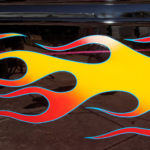Specialized graphic design is a growing job field that could see as much as 30% growth by 2024. For creative types, the graphics job market is an exciting place that continues to diversify as more companies and brands develop a curated online presence.
Graphic design is a competitive field that requires a lifetime of continuing education and skill development. For those looking into starting a career, it can be difficult to know what graphic design skills you need to get started.
Even if you plan to become a 3D or App designer, all budding graphic designers must start with the basics. A good grasp on the fundamentals of design will allow you to create striking, engaging content that draws the viewer in and conveys a specific message.
What skills should you focus on to develop your design repertoire? Read on to get designing!
1. Know Your File Types
Graphic design is not only about creating attractive graphics for clients. You have to know the appropriate use of images and file types for the job.
ThirdSide explains that raster and vector images, for example, have different uses in graphics, web content, and photographs. Do you know which file types work best for your design concepts, and how to change them if needed?
2. Tools of the Trade
The toolkit of every graphic designer contains program essentials such as Photoshop, InDesign, and Illustrator. While not the only graphics programs on the market, these are the industry standards you will often see listed as prerequisites for design jobs.
Consider taking a class in basic Photoshop or other program skills. Sites like Skillshare offer online classes you can do from home.
Working knowledge of the big design programs will make it easier to work with other designers on a team, share common file types, and get the most out of your ideas.
In addition to programs, there are a variety of tools on the market that are great for designers. Drawing tablets, for example, allow you to work with a stylus much the way you might on paper. Touch-screen devices make it easy for artists to convert their ideas directly to digital format.
3. Typographic Mastery
Typography is the ability to choose and manipulate the right font choices to convey the intended aesthetic to an audience. Masterful typographic skills will allow you to impact the mood and perception of the intended viewer.
A well-designed graphic can be easily ruined with poor font choices or placement. Knowing how to match the text to create a harmonious flyer, sign, website, or print can dictate how people interact with the product.
4. Color Theory
Sir Isaac Newton invented the color wheel in 1666, and it has since become a foundation of design principles. Light is a spectrum that can create moods, evoke emotion, and strike balance in art and design.
All artists use color theory in their daily work, whether they know it or not. Understanding primary, secondary, and tertiary colors will allow you to make harmony in your designs.
The skilled use of color can emphasize elements, attract attention, create an organization, and more. Color has a dramatic impact on the brain, according to research. A graphic designer can use that knowledge to make their designs more effective.
5. Windows and Mac Skills
Being able to utilize the two main operating systems will make you more versatile. While Mac was the go-to for graphic designers for many years, cross-platform software is making the use of both systems much more common.
You can’t expect all design firms to run solely on Mac anymore. Learning to switch seamlessly between the two will add a great mark on your resume and let you work on any platform at any time.
6. Know HTML Basics
Though you may not be a website designer, having HTML skills can set you apart from the pack. The knowledge to code your own designs will ensure your vision turns out exactly as you want it to every time.
Coding will also give you access to a wider field of job opportunities. While graphic designers often work with web designers, some positions require you to know both (and pay better for those skills!)
7. Design a Website
Designing yourself a website will not only display your design skills but give you a home to curate your portfolio. Carving out your own corner of the web will allow you to post updates on your latest work, attach it to a resume, and appear professional.
Potential clients and fans of your work will want to know where to find you. Even if your website is simple, having a stylish website you designed or co-designed yourself will give you a leg up in the industry.
8. Strive for Improvement
Undoubtedly, your skills will change and grow as you practice and learn. Setting aside time to create content daily will help you learn to combat creative slumps and manage your project time wisely.
Set goals for yourself for time and content, and practice meeting those goals. Not only will you grow your portfolio, but you’ll hone your skills and learn your strengths and areas for improvement too.
Get These Graphic Design Skills
Whether you’re in school to gain graphic design skills or are learning on your own, it’s important to understand the basic tools and techniques of the design field.
Developing a firm understanding of the programs and theories used by all designers will lay a solid foundation upon which you can build. These basics will serve you in everything from print media to digital design and advertising.
Looking for more articles about career development? Check out the CuriosityHuman Careers section today!

